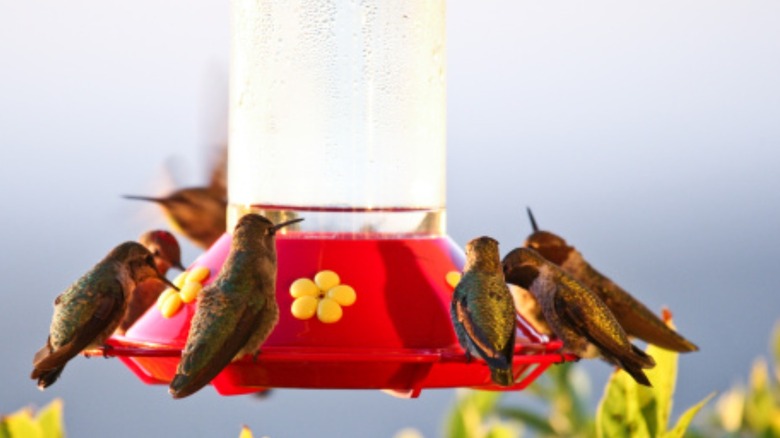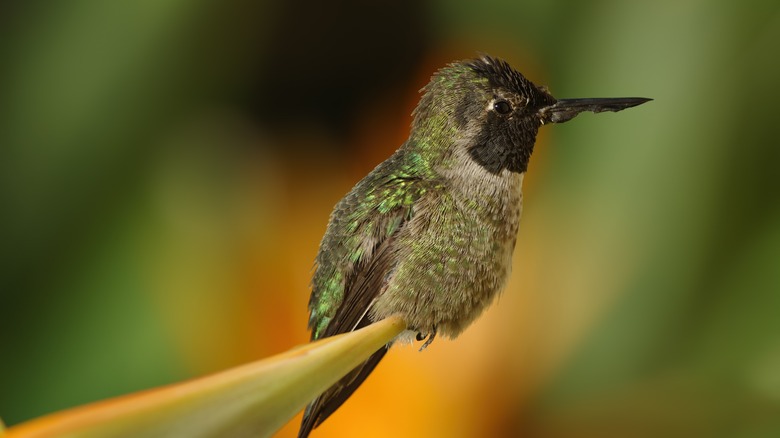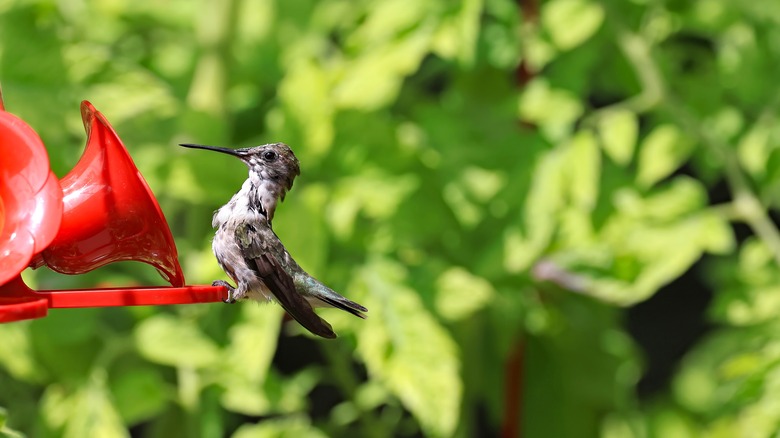Clean Your Hummingbird Feeder Immediately If You Spot This With Their Beak
Using a hummingbird feeder in your backyard also means knowing how often to clean it. But even if you are a steadfast weekly feeder cleaner, the routine needs to be adjusted if you notice something is wrong with one of your visitor birds' beaks. Dr. Christopher J. Clark from the Evolution, Ecology, and Organismal Biology department at the University of California Riverside told House Digest exclusively to be mindful of what the deformities could mean — and when to immediately clean your feeder.
As for the deformities, Clark said: "There are two main reasons: One is avian pox, which can hit hummingbird[s] pretty hard and cause large, ugly-looking growths to appear on the beak. When a bird has one of these lesions, it can look pretty bad, but we know that the birds can recover from them, fortunately." However, you may notice avian pox symptoms on the legs and feet or even their skin as well, he added. The ornithologist said you should look for yellow or white markings on the bird's beak corners as symptoms of a fungal infection like thrush. These can all be cause for thorough cleaning.
However, he said the other cause could be physical injury because hummingbirds sometimes run into things like windows, which can cause beak breakage. "Minor beak injuries they can survive and recover from," he explained. "The outside of the beak is keratin (like your fingernails) and grows continuously ... so it can recover from a minor injury."
Dangers of infections and feeders
The biggest problem with a potentially infected hummingbird drinking from a feeder is it is likely to pass on its illness. Dr. Christopher J. Clark exclusively told House Digest that, in this way, the feeder can be a hindrance. "Hummingbird feeders help the birds by providing a food source, but their downside is they can be a vector to disease to other hummingbirds," he said. "A hummingbird with pox might transmit pox virus (to other hummingbirds) through the feeder. So if you have birds with pox, I recommend changing the nectar every day and disinfecting your feeder with a bleach solution when you clean it."
Cleaning the feeder thoroughly and not making these big mistakes is paramount for keeping your hummingbird friends healthy. Clark advises using diluted bleach for thorough cleaning but making sure you fully rinse the feeder before putting in fresh nectar. The reason for using bleach rather than using vinegar to clean a hummingbird feeder is its bacteria-fighting properties. "It kills the many microorganisms that can be in the nectar," Clark advised. "To work best, soak the feeder for at least an hour in [a] weak bleach solution to kill all of the microorganisms."
What to do if you see a hummingbird with a damaged beak
If you notice a bird with a damaged but not necessarily infected beak, one of the best things you can do is to keep your feeder up. Dr. Christopher J. Clark told House Digest exclusively that it may be crucial for your hurt bird friend. "The bird with a deformed beak might not be able to feed from flowers due to the deformity or damage, so I suggest keeping the feeder up so that the bird has a food source and can feed from it," he said. "... If it has a severe beak injury, it may be more dependent on your feeders."
You may be compelled to help the visiting hummingbird by bringing them to an expert who can help. However, ornithologist Clark advises against that. So long as the bird can still fly and feed, it's better to leave them in the wild. If it can do these things, it doesn't need a rehabilitation center, he added.


